Audrey, aka Skipper, is a sailor and a seamstress, and has worked with fabric for more than five decades and knows a thing or two (or three) about sailcloth care. At the age of nine, she helped her dad, Cap’n Jack, build a 16′ daysailer, and she still remembers that the biggest expense by far for the boat was the purchase of the jib and mainsail. At the end of every sailing season, those sails were removed, cleaned, dried, and then stored under Cap’n Jack’s bed. On her mother’s side of the family, there’s a sailor’s history dating back to the 18th century, when Skipper’s fourth great-grandfather, Capt. Pierre Surget, stored the sails for his snow-brig, ST. JACQUES, at his home. Those bits of cloth were his livelihood: no sails, no ship.
Dacron sailcloth, the most commonly used material for cruising sails since the 1950s, is very durable and coated to protect its fibers from ultraviolet (UV) light, stabilize the cloth, and fill the weave to make it less porous. While Dacron sails are stronger and longer-lasting than their cotton ancestors, they still require care to give them a long and useful life.
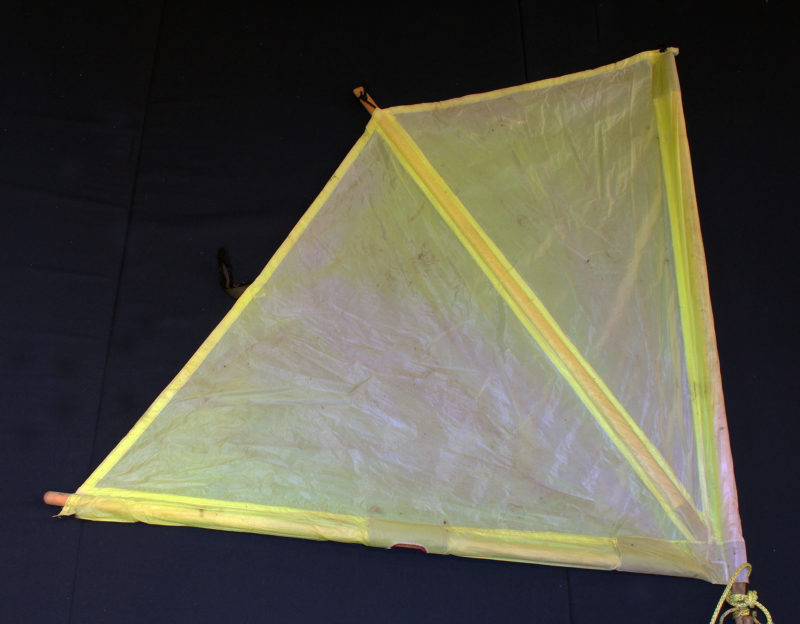 SBM photograph
SBM photograph This small, light nylon sail is a standard fixture on the editor’s kayak. Exposure to sunlight has faded the color, a very bright yellow-green that’s still evident alongside the spars but almost entirely gone in the areas of sail that were wrapped around them. The fabric is not yet falling apart, but it has markedly aged.
Since the late 1960s, Skipper has stood by tried-and-true sail-care practices that are very simple and take little time. At the top of her list is to avoid damage to the sail in the first place. We find UV damage frequently in our sailboat restoration hobby—folks leave sails on a spar year-round, which allows the sun to burn a stripe of weakened cloth on the exposed area. In the worst cases, the UV makes the cloth so brittle that we can poke a finger through it. Our friend Hunter Riddle, who owns Schurr Sails in Pensacola, Florida, tells us that most of the damage to sails he sees is caused by prolonged exposure to sunlight’s UV rays. If a sail must live rigged or outside, a sail cover is a good investment; a $200 cover can extend the life of a sail for many years.
Skipper’s second tip is not to let the sails flog in the wind when underway, moored, or beached. The sails don’t like flogging any more than we do, and the repeated stress put on the cloth, stitching, and hardware dramatically reduces sail life. Sails lose their shape, stitches break, grommets tear out, and cloth rips.
Dry the sails after use. If they’re put away wet, they can get stained by mildew. Sails that have been splashed with salt water, which damages the cloth and any metal fittings sewn to the sail, need to be rinsed with fresh water after the outing and then dried before being put away. Salt crystals that form when seawater dries abrade fabric fibers and coatings as well as absorb moisture from the air, leading to mildew. A well-maintained lawn, where the grass keeps the sail free from dirt, is a good place to dry sails. Raising a sail will dry it quickly, but if the wind is blowing, the flapping—flogging—will weaken it.
Sails should be cleaned at least once a season, more often in saltwater environments. We take the Hippocratic “do-no-harm” approach and stick to fresh water for rinsing and Dawn dishwashing liquid to clean small, soiled areas. Applying harsh cleaning chemicals to Dacron fabric and coating can quickly prove detrimental to the sailcloth. The sail may look cleaner, but the protective coating has been stripped away. If a cleaning product is not safe to put on a duck, we avoid it. If the stains and damage are outside the skill set of the average sailor, there are businesses and sailmakers that repair and recondition sails.
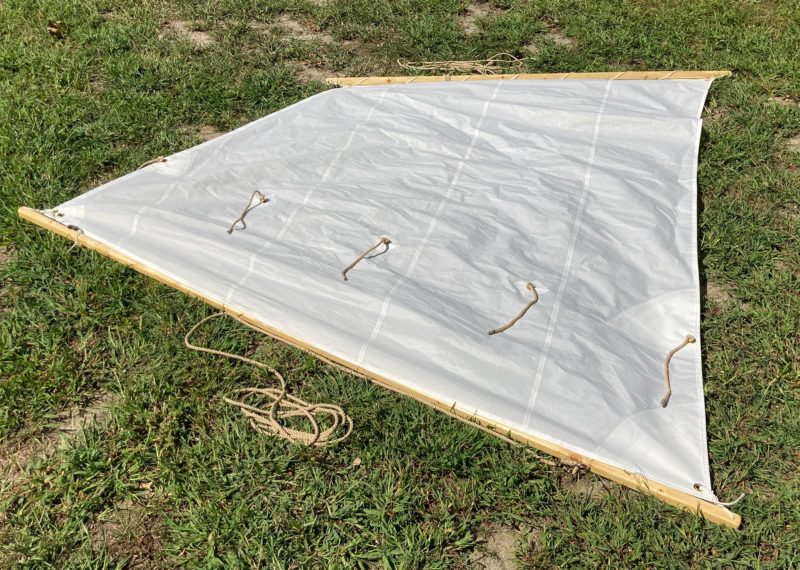 Kent Lewis
Kent LewisAfter a cleaning or being subjected to saltwater spray, a fresh-water rinse is followed by the sail being spread out to dry. A dry lawn is better for the sail than hanging it up and subjecting it to fluttering in the breeze. To keep from staining the fabric green, avoid freshly mowed grass and stepping on the sail.
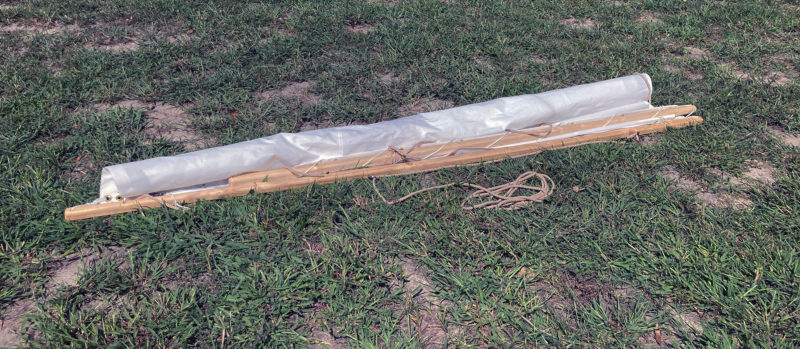 Kent Lewis
Kent Lewis Rolling the sail up to lie parallel to its attached spars can prepare the sail for being stored without the damage caused by folding.
It is best to repair damage as soon as it is noted, as a few loose stitches can become a large tear and a large repair bill. Use marine-grade adhesive sailcloth for small patches and UV-resistant thread for sewn repairs.
At the end of the season, small sails should be fully dry before being put away in a cool, dry place. We store ours in our garage or inside the house in the sail closet—there are too many to put under the bed. Sails left outdoors in the backyard attract rodents and insects that may create a nest full of all sorts of nasty stuff that would make a Hazmat professional wither. Larger sails that are left on the rigging should have protective covers. Small sails left on spars should have the outhauls loosened. We roll sails up around themselves rather than around spars that are lumpy with hardware that can press into the fabric and weaken it. We prefer rolling to folding because it doesn’t bend the cloth sharply and damage the coating. If a sail needs to be folded, it’s best to fold loosely as few times as possible and to avoid putting the folds in the same places every time the sail is folded. Stuffing the sail into a sail bag isn’t recommended as it results in a lot of sharp creases that damage the sailcloth fibers.
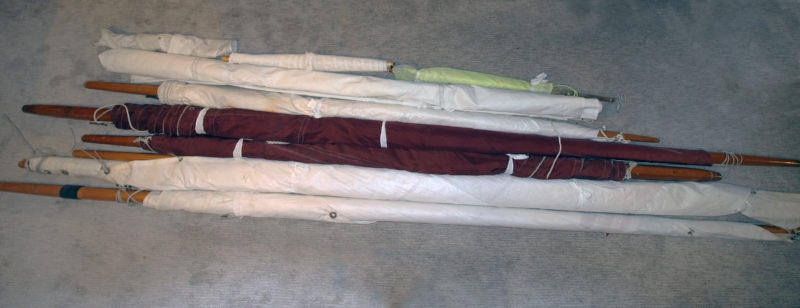 SBM photograph
SBM photograph Most of the editor’s sails are loosely rolled around spars and tied with strips of cotton cloth. None of the spars have metal hardware or protruding wooden fittings that might distort the sailcloth. All of the spars are varnished and won’t leave stains.
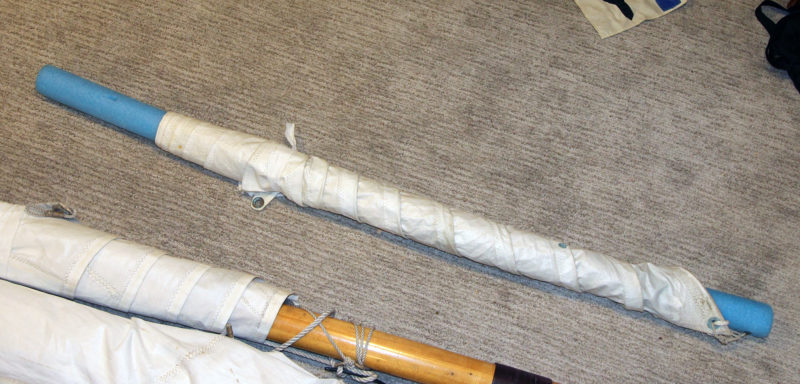 SBM photograph
SBM photograph Small loose sails like jibs can be rolled around foam pool noodles or pipe insulation.
As our sailmaker, Hunter, told us, we could skip the sail care and he’d be happy to sell us new sails every year. But sails are expensive to replace, and recently there have been sailcloth shortages and the cost is not likely to go down. Proper sail care can easily stretch a sail’s life to 40 years or more.![]()
Kent and Audrey (Skipper) Lewis have cared for hundreds of sails over the decades. Their sailing adventures are logged at Small Boat Restoration.
You can share your tips and tricks of the trade with other Small Boats Magazine readers by sending us an email.





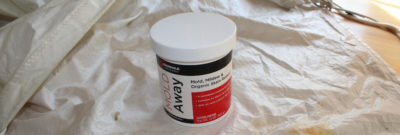
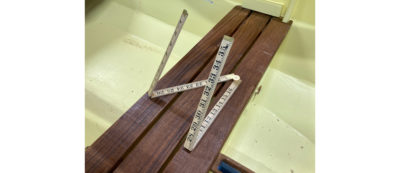





Join The Conversation
We welcome your comments about this article. To include a photo with your remarks, click Choose File below the Comment box.